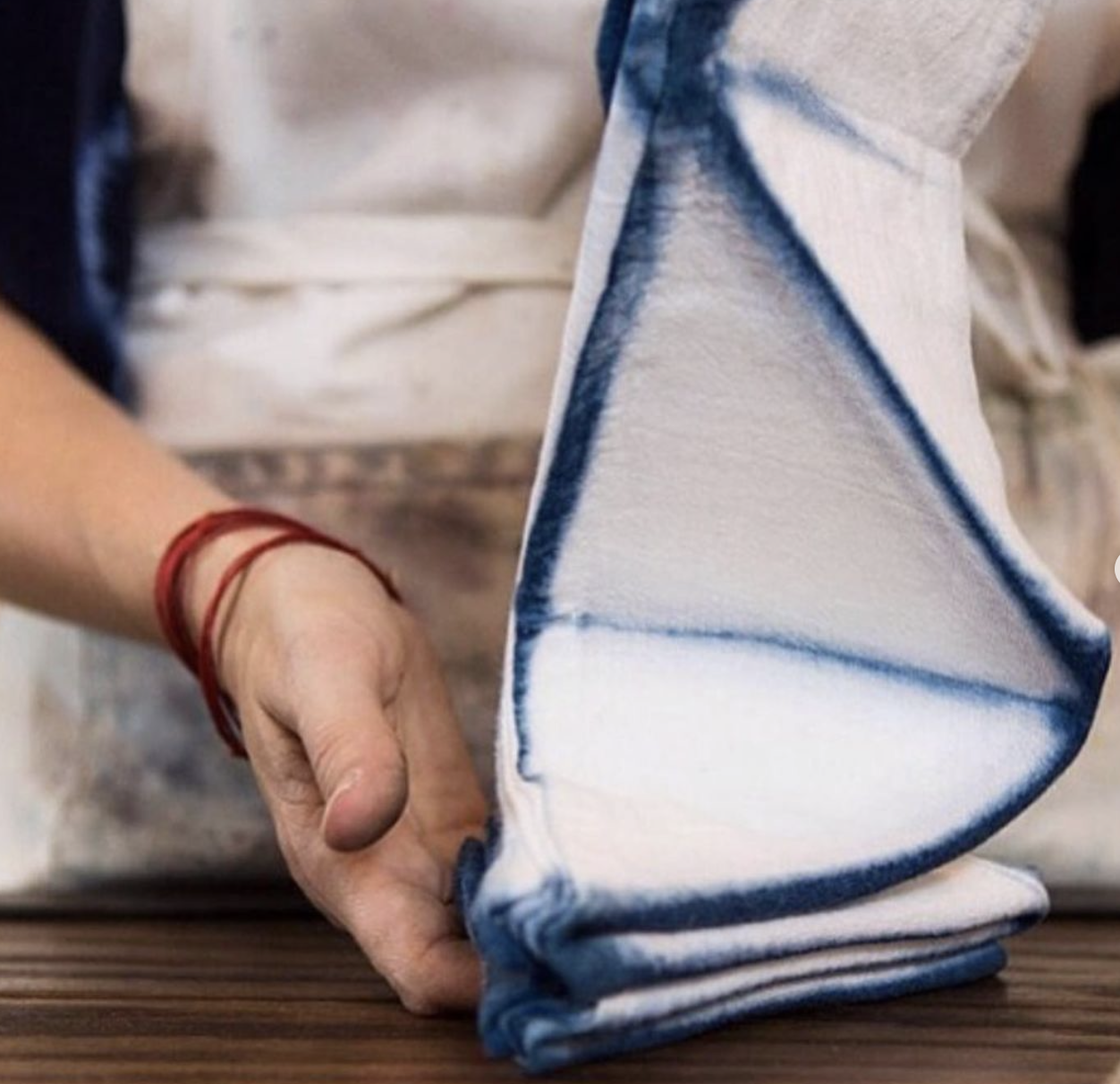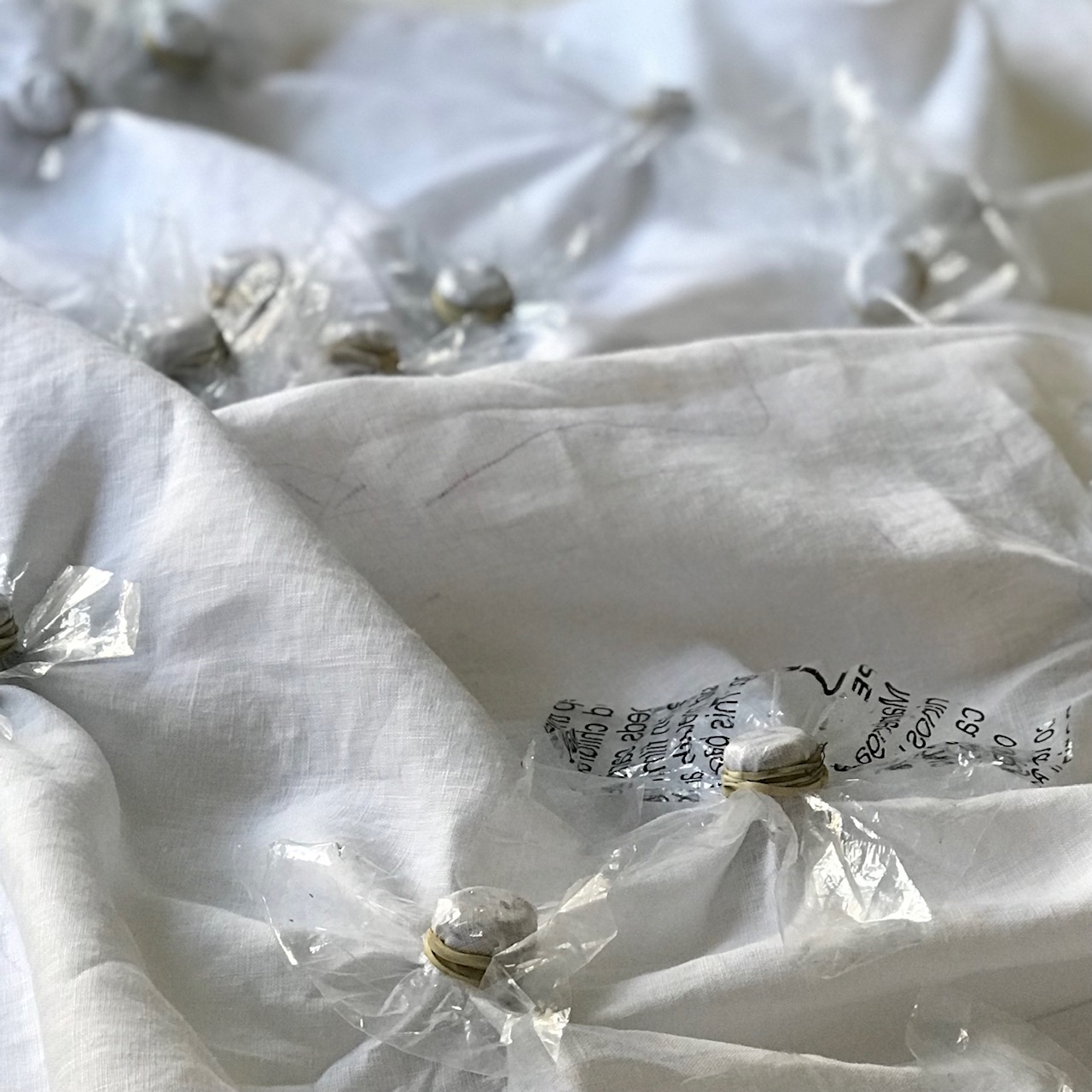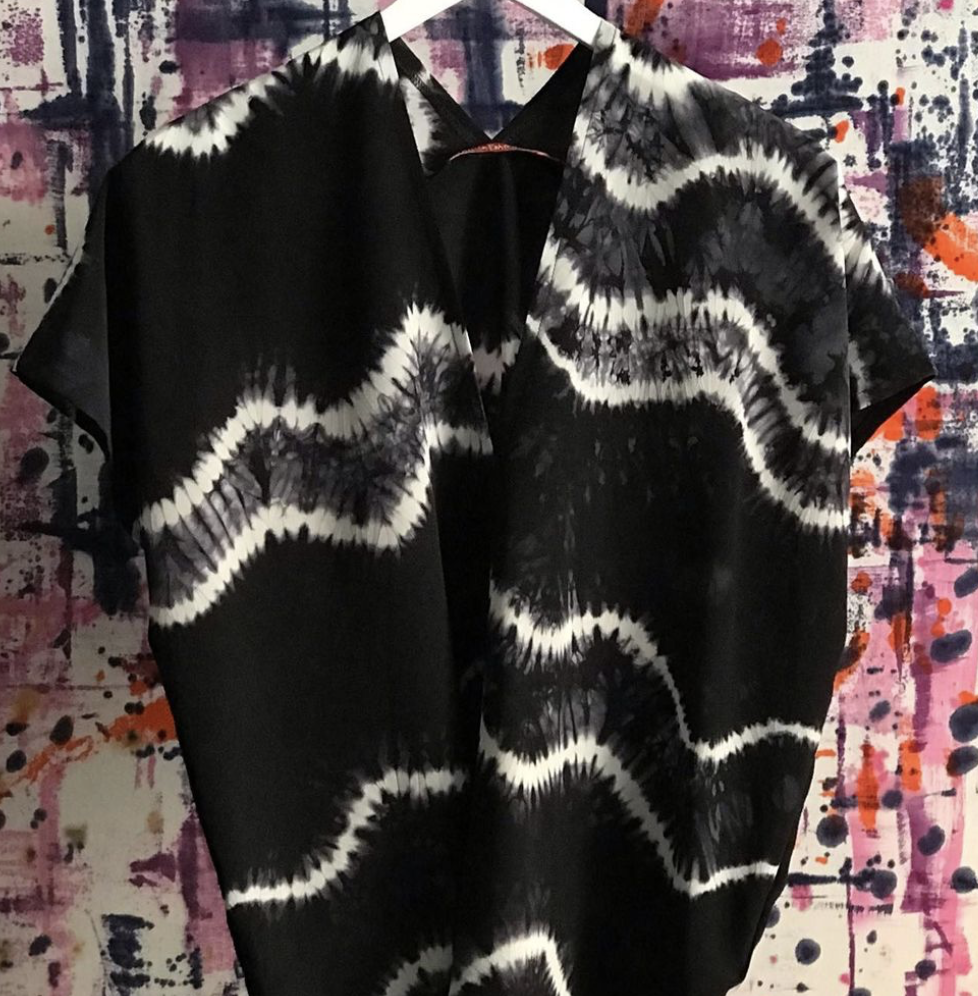ITAJIME SHIBORI
Itajime is a traditional Japanese shape resist dyeing technique involving folding and clamping with shapes. It is one of the most popular shibori techniques and one of the most immediately rewarding. Fabric is clamped between two shapes and act as resists to create the pattern.
I find this to be the a fun technique to create with as it is immediately rewarding.
My favorite is the tortoiseshell pattern, a hexagon, as featured below.

Itajime is a traditional Japanese shape resist dyeing technique involving folding and clamping with shapes. It is one of the most popular shibori techniques and one of the most immediately rewarding. Fabric is clamped between two shapes and act as resists to create the pattern.
I find this to be the a fun technique to create with as it is immediately rewarding.
My favorite is the tortoiseshell pattern, a hexagon, as featured below.

CAPPING
Capping is a creative way to create shapes, mainly circles, around the fabric when you don't want a regimented look. I use wine corks, rubber bands and plastic.

MOUNTAIN PATH SHIBORI
Mountain path Shibori is one of my favorite techniques. I start by drawing an undulating line to represent a mountain path or also what I like to call a wave pattern with a water soluble pencil or disappearing marker. Then starting on one side of the fabric following the line I had drawn, pinching and gathering the fabric as I go. If the line goes left, gather and pinch the fabric with your right hand. When the line goes to the right, pinch and gather with your left hand. Along the way holding the fabric in my hands, don't let it go! At the end I bind the fabric with string, wrapping the string around the gathered area. The string acts as a resist, no dye will enter. When the fabric is unbound you get this lovely pattern.

More coming Soon...
